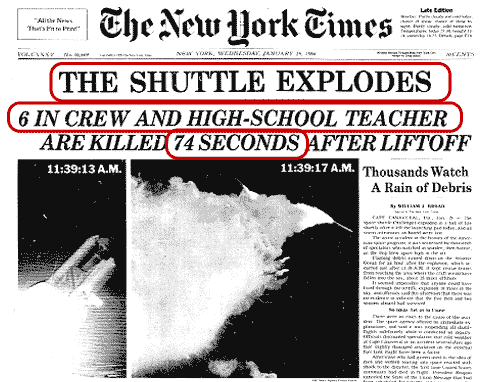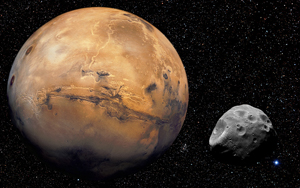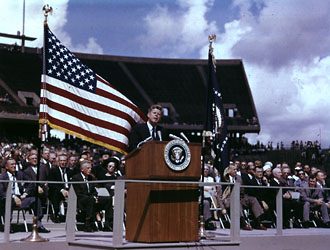Examining a Headline
Newspaper articles are excellent examples of “informational expository text.” Read the newspaper headline that follows. We will focus on finding the controlling idea and supporting details in this short piece of text.

Source: Screenshot of newspaper front page, New York Times Knowledge Repository
To get your attention and sell newspapers, headlines include key information that we are eager or anxious to know. In this case, the controlling idea of the headline is that the space shuttle Challenger exploded 74 seconds after liftoff. You probably want to know more; you want details. The headline achieves its purpose because it makes you want to read more about this terrible tragedy. The supporting details about how many astronauts were killed and the fact that a civilian school teacher was on board help to fill in the big picture and are also in the headline. These details support the controlling idea.
Let’s do a quick review of this material just to make sure you understand these concepts.
- What is the controlling idea of this newspaper headline?
- What is the purpose of this headline?
Examining a Paragraph

Source: “Mars and Phobos (Martain moon)”, DUCKofD3ATH, Flickr
For the next example, you will read a paragraph to find an important supporting detail that leads you to the controlling idea and specific purpose of a text. Sometimes a title provides clues to the controlling idea, so that’s always a good place to start. Other times the controlling idea may not be obvious and may be hidden in the details. In this case, the controlling idea is implied rather than clearly stated. Read the following paragraph and look for important details that help to support the controlling idea. When you’re finished reading, complete the activity below.
Mission to Mars Gives New Life to Space Program
After decades in which the space program drew more yawns than cheers, the heavens are suddenly alive with the tragicomedy of the Russian space station Mir and the triumph of Mars Pathfinder’s roving exploration of the red planet. Policy analysts say the burst of activity hints at things to come. The drama, they say, will continue or even rise in years ahead as astronauts take on risky new jobs and waves of low-cost robots explore other worlds.
- What is the controlling idea of this paragraph?
- Use your notes to write down a detail that supports the controlling idea. When you’re finished, check your understanding to see a possible response.

Sample Response:
“After decades in which the space program drew more yawns than cheers, the heavens are suddenly alive with the . . . exploration of the red planet.”
The detail about the heavens opening up after scientists began exploring Mars with the Mir and the Pathfinder supports the controlling idea, “The exploration of Mars is making the space program interesting again.”
Examining a Speech
The next example is a speech given by President John F. Kennedy at Rice Stadium in Houston, Texas, in 1962. As you read, ask yourself, “What is this speech about?” Look for repeated words or details that might help you identify the controlling idea. First, read through the entire text. Then reread it and click on repeated words that might be important. If you choose correctly, the words will highlight. You should find at least 14 instances of repeated words or phrases.

Source: John F. Kennedy Moon Speech - Rice Stadium, NASA
We set sail on this new sea because there is new knowledge to be gained, and new rights to be won, and they must be won and used for the progress of all people. For space science, like nuclear science and all technology, has no conscience of its own. Whether it will become a force for good or ill depends on man, and only if the United States occupies a position of pre-eminence can we help decide whether this new ocean will be a sea of peace or a new terrifying theater of war. I do not say that we should or will go unprotected against the hostile misuse of space any more than we go unprotected against the hostile use of land or sea, but I do say that space can be explored and mastered without feeding the fires of war, without repeating the mistakes that man has made in extending his writ around this globe of ours.
There is no strife, no prejudice, no national conflict in outer space as yet. Its hazards are hostile to us all. Its conquest deserves the best of all mankind, and its opportunity for peaceful cooperation may never come again. But why, some say, the moon? Why choose this as our goal? And they may well ask why climb the highest mountain? Why, 35 years ago, fly the Atlantic? Why does Rice play Texas?
We choose to go to the moon. We choose to go to the moon in this decade and do the other things, not because they are easy, but because they are hard, because that goal will serve to organize and measure the best of our energies and skills, because that challenge is one that we are willing to accept, one we are unwilling to postpone, and one which we intend to win, and the others, too.
It is for these reasons that I regard the decision last year to shift our efforts in space from low to high gear as among the most important decisions that will be made during my incumbency in the office of the Presidency.
Did you look for words that were mentioned several times or were strongly emphasized? In the first paragraph you’ll notice that the word “space” appears three times. When reading to find the controlling idea, it’s a good idea to have a pen and paper handy to mark or highlight words or to use a highlighting tool in the software you’re using. If what you’re reading is a worksheet or is on a test you’re taking, you may want to write notes in the margin or circle words, phrases, or sentences that suggest the controlling idea.

Source: Moon, Will Smith, Fotopedia
You’re not finished, though; in the excerpt you just read, for example, you need to see if “space” or space-related items are mentioned in other paragraphs. Upon closer inspection, you may find a controlling idea in the repeated words. The words “space,” “outer space,” and the “moon” are mentioned many times. Can you assume that “space” is the controlling idea?
Look again, but this time focusing on verbs like “won” and “choose” and verb phrases like “to be gained” (which we didn’t highlight) and “to be won.” These verbs and verbs phrases not only provide details that help clarify the controlling idea but also provide clues about the author’s purpose. In the last paragraph, the President says he is going to “shift [space exploration] from low to high gear.” Since verbs “do” things, it’s clear that President Kennedy wants Americans to do something. This gets you closer to the controlling idea by asking, “What is it that President Kennedy wants Americans to do in space?” The answer to this question is the controlling idea.
- Look at the highlighted words and phrases that are repeated in the speech. What do you think is the controlling idea of the speech?
Now that you have discovered the controlling idea, you need to find the purpose of the text. The purpose explains why the author, in this case President Kennedy, shared this information with Americans. Go back and look closely at the highlighted words and phrases that led you to the controlling idea. After doing the work to find the controlling idea, can you tell what the specific purpose is?
- The specific purpose of this speech is to—
Now that you are more familiar with how to find the controlling idea and specific purpose of a text, you are ready to examine evidence or the details that support them.